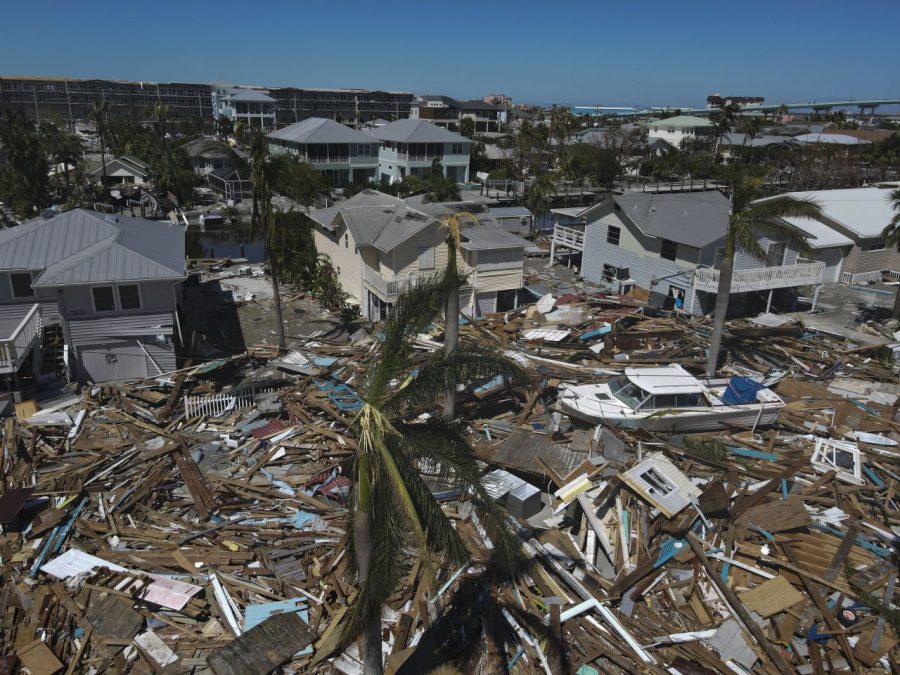Hurricane Ian causes high death toll, displacement
Aerial shot of Fort Myers Beach, Florida in the wake of Hurricane Ian on Sept. 30.
Hurricane Ian has hit Western Cuba, Florida, and now North and South Carolina. This beast of a storm has been classified as a Category 4 hurricane and has had winds of up to 150 miles per hour (Reuters).
As of Oct. 2nd, the death toll stands at 88 and at least 40,600 people are displaced. 76 of these deaths occurred in Florida alone (CNN). At one point, the entire country of Cuba (11 million people) were left without power, along with hundreds of thousands in Florida.
Many of the casualties in Florida were elderly citizens, many of whom live in communities predominantly composed of retired populations. To make matters worse, major freeways were closed due to heavy rainfall, making evacuation and rescue attempts more difficult.
A striking example of the power of storms like this can be seen in looking at Sanibel Island, a small Floridian island near Fort Myers. Sanibal has endured extensive damage both on the island itself and on the bridges connecting it to the mainland, leaving members of the still remaining 6,500 year-round residents stranded (NPR). Furthermore, the electric and sewer systems on the island have essentially been destroyed.
Hurricanes like Ian arise from terrifying combinations of warm ocean water, thunderstorm activity, wind patterns and tropical waves, which are areas of low pressure in the atmosphere (National Ocean Service).
Hurricane Ian has been dubbed as “one of the five most powerful hurricanes in recorded history to strike the US,” (The Guardian). Climate scientists are coming to believe that a recent trend of powerful storms occurring is not a coincidence, but rather in part fueled by human intervention.
As mentioned, a significant cause of hurricanes is warm ocean water, and this year it was found that bodies of water located on the coast were two to three degrees Fahrenheit warmer than normal — which has a large impact (New York Times). The oceans absorb “more than 90 percent of the excess heat from human-caused global warming over the past 50 years,” (New York Times).
Although it has not been found that climate change increases the number of hurricanes that occur, it is worth paying attention to the increasing severity of these storms. Hurricane Ian is just one example of a disaster inflicting suffering and unimaginable loss to millions. It is important to recognize the various consequences that can and do occur as a result of the actions of human beings concerning the environment.








